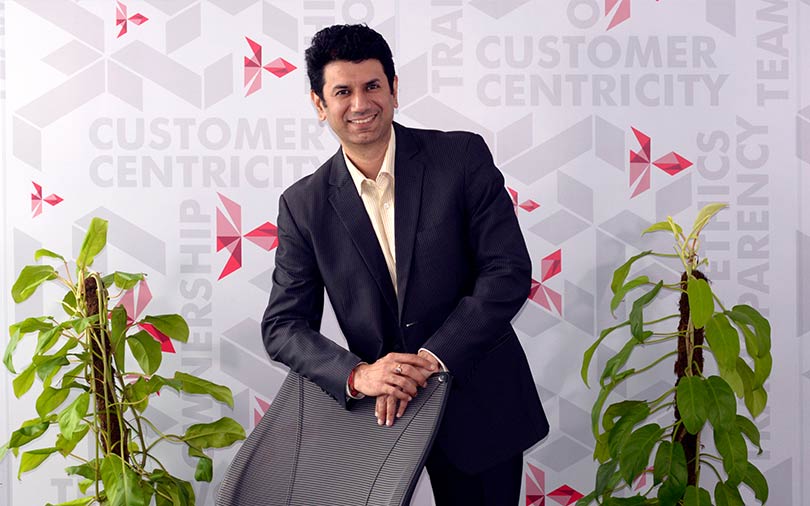
With FreeCharge, we want to offer services beyond payments: CEO Sangram Singh


When homegrown e-commerce firm Snapdeal bought mobile wallet FreeCharge in 2015, it was billed as the largest e-commerce deal then. The transaction was pegged at around $450 million. But then two years later, in July 2017, private sector lender Axis Bank mopped up the mobile wallet for about $60 million (Rs 385 crore), a mere 15% of the $400 million that Snapdeal had shelled out.
Prior to being acquired by Snapdeal, in early 2015, FreeCharge had raised $80 million in a Series C round of funding from San Francisco-based hedge fund Valiant Capital Management, Hong Kong-based hedge fund Tybourne Capital Management, Sequoia Capital, ru-Net and Sofina.
Founded in 2010 by Kunal Shah, a philosophy graduate, and Sandeep Tandon an engineer-entrepreneur, the mobile wallet has been under the helm of Sangram Singh, a banking veteran who is an alumnus of IIM-Calcutta, for over a year.

In a telephonic conversation with TechCircle, Singh talks about how FreeCharge has evolved to more than just a wallet under Axis Bank. Edited excerpts:
As a part of Axis Bank, how do you now run FreeCharge?
It was decided at the time of the acquisition itself that we will run FreeCharge as a subsidiary that is completely independent of the bank.

FreeCharge will continue to be a digital business providing tech products and services. The focus remains on developing products with proprietary technology, unlike larger organisations which typically work with major technology suppliers. The tech is developed by our own people.
In terms of performance, FreeCharge has seen healthy growth after the acquisition. We got over half a million new customers over this period. From the time we acquired the company, we added over 50% of users. Overall, digital payments are still small, compared to the work happening in cash. There is tremendous headroom for financial services as a whole, specifically the digital payments industry. Our efforts will offer us growth for a long time.
After the acquisition, what organisational changes were made to FreeCharge?

The board was set up and I came in as CEO. But there were not many changes. It is not a bank but a fin-tech company and it continues to remain so. Of course, we look for synergies with the bank. That is a force multiplier and gives us a strategic advantage. But on a day-to-day basis, we run FreeCharge like an independent company.
Does FreeCharge offer any more services besides payments?
We keep adding services all the time. For instance, on the payments side, we have been expanding our network of merchants as well as the kind of bill payments we do.

We want to offer consumers a full digital financial platform not restricted to payments only. For this, we have expanded the financial services we offer. In addition to e-payments, customers can now open an Axis Bank digital account via FreeCharge, purchase mutual funds on the app, take out a loan and maybe in the future buy insurance products. We went live with the unified payments interface a few months back and have seen very good adoption.
The Axis Bank homepage does not have a FreeCharge link or tab. Is that deliberate?
Yes, right now, it is. Axis Bank and FreeCharge are two different entities so we want to keep the brands independent. There is a very small overlap between the customers of Axis Bank and FreeCharge. We want to bring new customers to Axis Bank through the FreeCharge app.

What are FreeCharge’s expansion plans?
We continue to focus on growth, which has not been limited to the metros. We are present in many cities and we continue to see good growth coming from them. What will help us ride this growth is adding more features to our financial services platform. People come to FreeCharge to make bill payments, but we need to ensure we are offering them all other financial services. These value propositions will lead to further growth.
What kind of transactions do you see the most on FreeCharge? Do users you still see a large number of mobile phone recharges?

Historically, the largest number of transactions would come from recharges. They now comprise less than 50% of transactions. We have a very healthy mix currently. Categories like DTH have become as big as recharges.
How are you managing losses? When do you expect to break even?
Breaking even is still in the works. The objective is to get the losses out. But right now, the more significant aspect of the business is to ensure that we can create a strong value proposition and that we can drive growth. This is fundamentally a business where you acquire customers to grow it. In this early stage of the acquisition, the focus is not so much on optimising for a bottom line number but to create relevance through referrals, value propositions and driving growth.
Do you have a revenue target in mind?
Internally, we do have. As a public listed company, we don’t reveal our financial numbers to the media.
What do you think of the competition in the wallets business, Paytm, Phonepe and UPI?
Everyone will evolve towards sustainability. No single player will focus only on one aspect of financial services like payments. The intent will always be to start with payments and wooing the customer for other services including lending, insurance or investments.
The market out there is much larger than what is presently available. The current market shares of players are not significantly relevant. Right now, it is a small pie. In our view, financial services is not a winner-takes-all. Look at the banking sector, for instance. It comprises of some large and significant players and then there are the long tail of smaller players. Our intent is to be among the top few players, not necessarily the largest or second largest, but a significant player. We are on track to ensuring we stay in that game. The market is still expanding.
